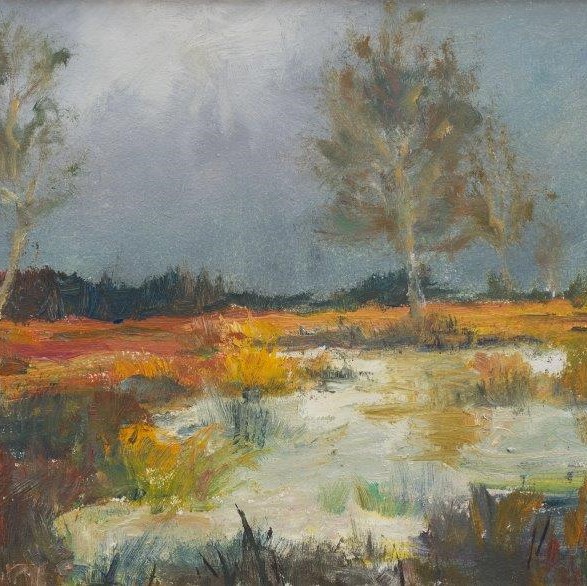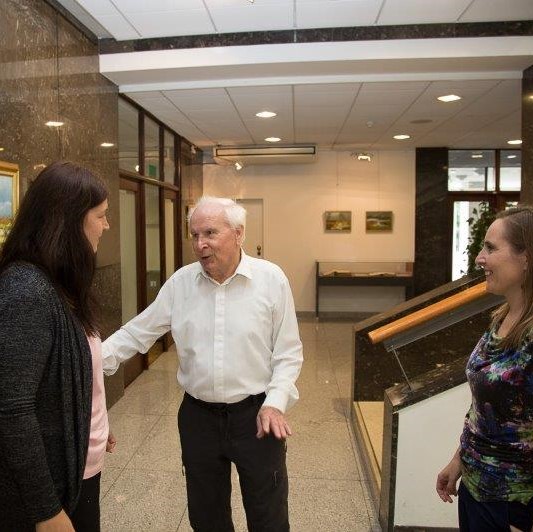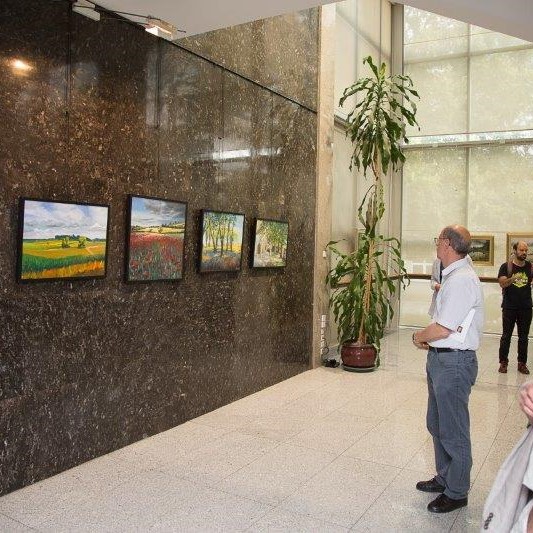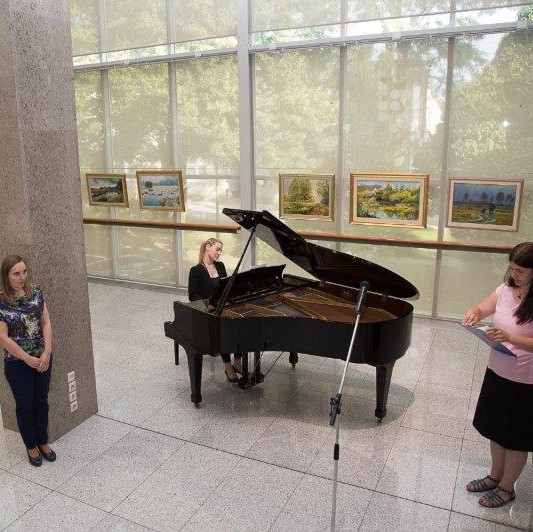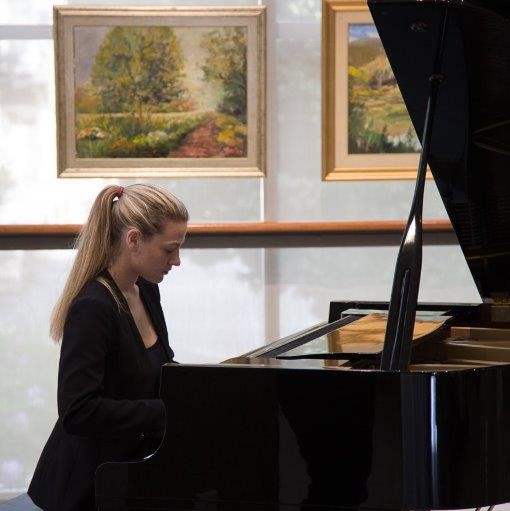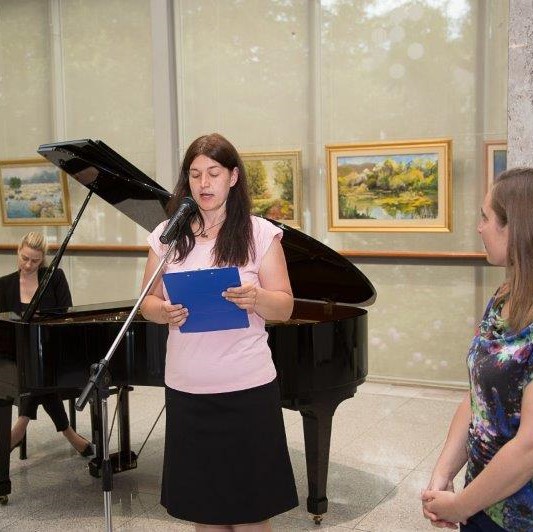Miro Starič: Paintings / slovensko
»Jožef Stefan« Institute Gallery, Ljubljana, 26. 6. - 20. 7. 2018
Landscapes full of light
The life of Miro Starič was an unusual weave of seemingly very heterogeneous activities: electro technics, the tuning and repairing of pianos, sound design for various cultural events, psychoanalysis and painting. The latter was developed into a sincere intimate confession, a travelogue of his frames of mind. At the anniversary of his passing, the art critic Petra Vencelj noted that Miro Starič was a painter of mood landscapes whose poetic imagination was also reflected in his optical scientific approach linking the outer world with spiritual reflections, lyrical, melancholic at times.
Miro Starič’s works convey a particular lyrical melancholy expressed through his seeking of dramatic light and harmonious balance of the landscape. He employed oil on canvas technique that he mastered perfectly (albeit self-taught artist) to achieve the softness and the merging of all elements. Thus he pursued the tradition of the classical easel art on the model of impressionists, great admirers of light and nature, as well as expressionists who expressed inner depths through the images of the visible world. The artist selected picturesque motifs in Slovenia and Istria, the moods in the landscape were rendered with visual elements and his artistic style: colour harmonies, light-dark and cold-warm contrasts, and pasty paint application which recreate the flickering atmosphere over the landscape. The images of nature are outbursts of life-joy and merriment.
The paintings of Miro Starič are rich with light and radiate tranquillity, silence, a timeless message, and the perennial beauty of nature. They praise genuine contact with nature and man’s close relationship with it. The landscape thus turns into a space for inner dialogue. The observation of colours and lights in nature, and artistic examination of their physical properties, reflect onto the search for inner light. A spiritual link is thus established between a real landscape and its artistic representation. Although rendering moods is at the centre of the painter’s interest, the paintings are thoughtfully built, the compositions follow a solid logic. Also his brush strokes are self-confident and decided, though dynamic and relaxed at the same time, even playful. Besides observing the light, the artist was primarily dedicated to finding the depth of a painting, not only through studying the perspective but also through investigating the metaphysical dimensions of art.
The artist’s sister Zorána Starič beautifully describes his character and spirit: “Miro’s talents were surprisingly heterogeneous. He was incredibly curious and open to life; he loved humanity and was always ready to find a funny side of everything and able cheer up anybody. His constant and fundamental trait was his need for permanent learning and improving in all the fields he was eagerly engaged in until the end of his life.”
Monika Ivančič Fajfar
Translated by: Milan Stepanovic
Exhibition is organised by Institut "Jožef Stefan".


